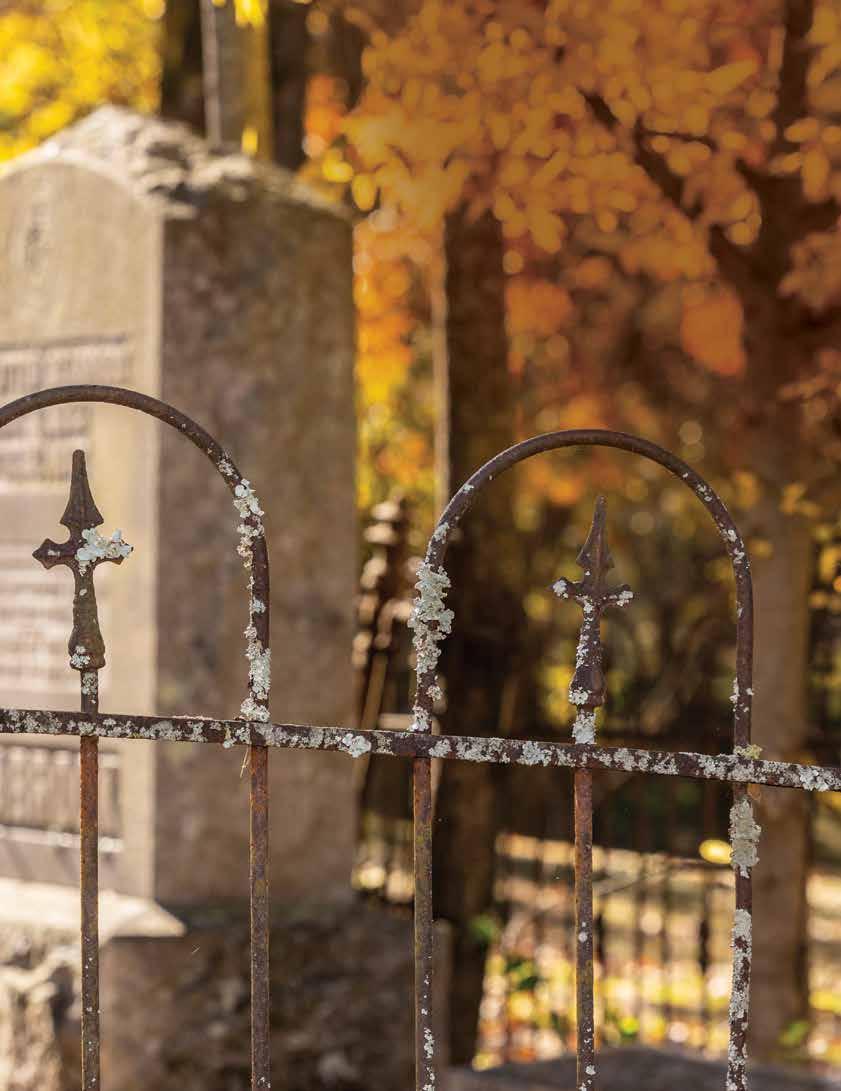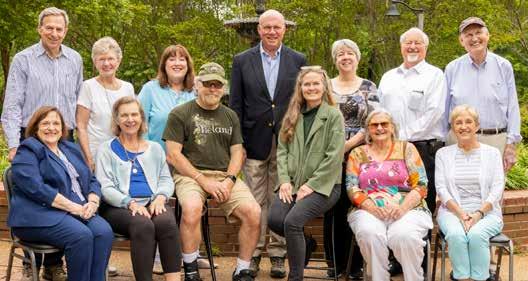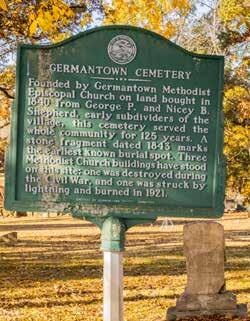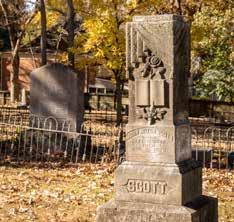
5 minute read
THE PAST OF THIS PLACE
Past The
of This Place
A Look Around with City Historian Andrew Pouncey } Over 40,000 people live in Germantown, but how much do residents really know about the history of the place they call home? Learning about the past informs the future, and Andrew Pouncey has worked for years to chronicle the events and characters who shaped what is now the present. As City Historian and Germantown Historical Preservation Association President, he has archived the last 180 years of local history. Pouncey has read all the Board of Mayor and Aldermen minutes for the last three decades and has 30 years of Germantown News, bound paper editions, in
his upstairs room. He is a fountain of little known facts about the area, starting with Nashoba. In the 1820s, a Scottish woman called Francis “Fannie” Wright purchased 2,000 acres to develop Nashoba Plantation, an experimental utopian community intended to emancipate slaves. In 1833, the community became known as Pea Ridge. Town lots were laid out in 1834 by surveyor N. T. German, and the name was changed to Germantown in 1836, reflecting the presence of German families. For a brief time during the first World War, due to anti-German sentiments, Germantown's name was changed to Neshoba, the Chickasaw word for "wolf." “There are so many markers around the city where residents can put history in place,” Pouncey says, “If they only know where to look.”
Tour of Historic Markers
The City originally covered only one-square mile and had just a couple hundred inhabitants. Today, four massive stones mark the original boundaries of town proper, labeled “OG” for Old Germantown. Early settlers clustered around the railroad that ran from Memphis to Charleston. Old Germantown includes the area surrounding the Train Depot, considered the city center until the 1950s. Pouncey knows the stories of the railroad, the historic depot and what was the city’s original center. Throughout the district, 25 stone markers with photos illustrate original sites, opportunities to stand and see “then and now.” About a half mile east, land originally provided as a place of worship and education for slaves became home to the first school in the area for African-Americans in 1886. Founded by the leadership of New Bethel Missionary Baptist Church, Neshoba School later became a junior high and remained in operation until school integration in 1969. Farther down the tracks, Fort Germantown is marked by replicas of Howitzer cannons. It was built by Union troops to guard the railroad during the Civil War. “It’s not really a fort, but a redoubt,” Pouncey explains. “The main difference is that soldiers lived inside forts, but they used this structure to protect supplies and munitions. The soldiers lived outside in camps.” The original earthen structure lies in a five-acre park in a residential neighborhood. From the redoubt, there is still a clear view of the railroad tracks.
-Andrew Pouncey, City Historian

Germantown Historical Preservation Association Front Row: Jackie Clift, Jeanette Watkins, Sid Witherington, Joni Roberts, Eleanor Woodward, Sharon Cornelius Back Row: Walter Wills, Sue Williams, Mary Welsh, Andrew Pouncey, Edna Guntert, Lee Millar, Bill Watkins (Not pictured Susan Glassman, Carolyn Grizzard, David and Janey Jackson)

Online Museum
Find these stories and more at the online museum GermantownTNHistory.org, a comprehensive project of the Germantown Historical Preservation Association (GHPA). A total of 190 pages, the site is full of stories, old photographs, maps and newspaper articles. Developed by volunteer Amber Abney, the website collection is detailed, expansive and searchable. The idea originated with some ladies who wanted to open a museum of Germantown history, a physical place to go and learn about the city’s roots. Their inherited assemblage of historical artifacts, while richly interesting, could not justify costs for a building, upkeep and staff. Instead, the collection became an exhibit on display at Germantown Methodist Hospital. Around this time Pouncey went to New Zealand and wanted to visit a historic chapel. But it was closed. “I sat outside at a cafe, and I looked online. There it was: an online museum. The inside of the chapel, the outside, the construction, the collections. And I thought, ‘This is it.’ Anytime, anywhere people can see Germantown history.” Working together, the GHPA created the online museum allowing for frequent opportunities to import new material and make corrections easily. The website project was made possible with grants from the Shelby County Commission, the City of Germantown and private member donations. Pouncey believes the future is guided by the past. “Just in these last three years, so many people from the 1960s who set the rules and ordinances for what the City is today, are gone. There’s no one to turn to ask.” He pauses on the steps of Germantown Historic Church near the marker most recently placed. Five years ago, the chapel was restored to its 1870 appearance. Pouncey stares up at the steeple. “Thankfully we’ve got these stories and can feel a kinship when we share with Germantown residents on how all this happened.”■


o
GERMANTOWN HISTORIC PRESERVATION k
Germantown Cemetery sits on a quiet hill off McVay Road. Founded in 1840, it served as community burial grounds for 125 years. Over time, the land became overgrown. In 2018 the Germantown Historical Preservation Association (GHPA), with the help of Christian Brothers High School students, began clearing underbrush and resetting headstones. The ongoing restoration includes raising sunken markers, planting grave cradle gardens and planning a theatrical performance and tour. A joint effort of the Germantown Community Theatre and the Germantown Historic Commission, the tour previously planned for fall will be rescheduled for this spring. Actors will portray figures who are buried in the cemetery, bringing to life stories and historical facts about a few people who lived over a century ago. Teacher and journalist Sallie Eola Reneau published accounts and reported on the details of the Yellow Fever epidemic, dying in October 1878, alongside those she had served. Mrs. Florida C. Thompson donated land to New Bethel Missionary Baptist Church where it would begin its ministry along Southern Avenue. Mary O’Neil, daughter of Wheelwright Arthur O’Neil, died of Yellow Fever in the fall of 1878. She was buried at night, a popular custom at the time, in order to reduce the scare and flight of others from Germantown. The Scotts, McKinnons and Roberts were all descendants of a family from Virginia who settled on a 350-acre land grant along Hacks Cross Road, south of the railroad.









